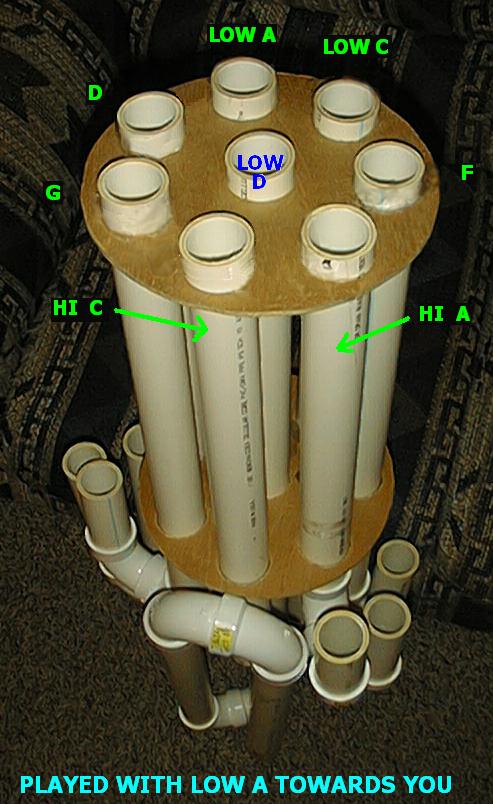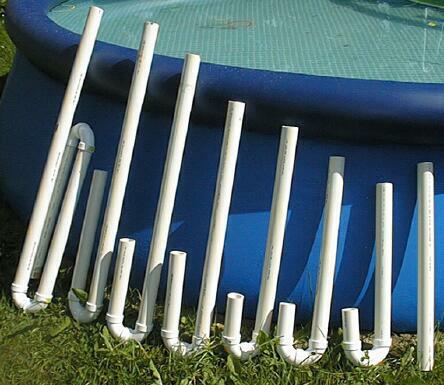
Before the article............
"EDITORIAL": I am SO dismayed to see a Swiss-made hang drum sell for almost
$10,000 on E-bay!! All this can serve to do is jack the price up across the board
and make hang drums only affordable to the rich.
I see my sincere desire to someday have my own slipping away from me!
Later note:
>>>>>>>>>>>>>>>>>>>>>>>>>>>>>>>>>>>>>>>>>>>>>>>>>>>>>>>>>>>>>>>>>>>>>
PLEASE NOTE: A real, Swiss-made hang drum is VERY difficult to obtain
these days. A ray of hope is on the horizon however-- Pantheon Steel,
a maker of beautiful steel drums ("steel pans") is researching and
experimenting -- with the intention of producing hang drums (under
a different name) for sale. Please contact them at pantheonsteel.com
and encourage them! They're looking for signs of interest at this time.
>>>>>>>>>>>>>>>>>>>>>>>>>>>>>>>>>>>>>>>>>>>>>>>>>>>>>>>>>>>>>>>>>>>>>
Well, no - this is not a hang drum, but if I can't get to
Switzerland to get one ----- then I'll have to invent
something that at least plays like one (in D minor pentatonic
scale) & satisfies the insane urge to paddle away & try to
capture a bit of the joy that so obvious in the faces and
music of those experts I see on youtube playing the hang
so skillfully.
After being amply impressed by seeing the Blue-Man Group and
their PVC tubing instruments in Chicago recently, I came up with
this "PVC tubing instrument that is a (perhaps unholy) combination of
the two dissimilar instruments -- It sounds and plays quite nice.
Should I happen someday upon a real hang drum, the relative note
placement on this tubing hang drum is the same as on a D minor
pentatonic,7 notes (plus central "ding") metal hang drum.
Click here to access
a short YouTube video of me playing this instrument.


This instrument is played with one's fingers (although whapping it with
flip-flop beach sandals does increase the volume). It is pitched one
octave lower than metal hang drums. The notes, low to high,
are D (central "ding")/ A, C, D, F, G, A, C.
Originally I was intending to use 2" schedule 40 PVC, but
after a good deal of experimentation, settled on the smaller 1-1/2"
schedule 40 PVC piping. The resonance is about as good (& loud)
and the bigger stuff (being wider diameter) is harder to cover
completely & thus sound properly with your fingers.
The whole affair cost on the order of $30 - using all new parts
and was a single-day project.
My initial model used golf-club sheath tubes which produced an instrument
that worked, but was too quiet, especially on the higher notes.
The 1-1/2" tubing has very nice tone and volume.
I opted for this D minor pentatonic scale after seeing the video on
youtube.com of a fellow in Pennsylvania's masterful playing in this scale.
There's no reason at all that any of the many hang drum scales wouldn't
work for this hybrid instrument. I determined the scale, notes and
placement by sometimes painful and repeated observation of the videos
seen on youtube. A crack player named Andi has an "aerial view"
of his instrument that greatly facilitates figuring out what
scale and tuning he's in. Most videos show the instrument obliquely
and it's much harder to determine this information.
So on to the construction details:
The thing is made entirely from what's called "1-1/2" schedule 40 PVC pipe.
The stuff is white and the 1-1/2" is the inside diameter. Three ten-foot lengths
turned out to be just enough for all of the eight notes. A ten foot length of this
pipe cost me about $4.00 locally. The only other PVC parts needed are nine
female-to-male 90 degree elbows and nine female-to-female 90 degree elbows
(these make the nine 180 degree "U-turns"). These "U-turns" cost more than the
long piping itself -- about $2.60 per "U").
Safety note - some people tell me they've worked with PVC pipe all their lives
with no health issues at all, others tell me that the stuff is dangerous. Not
one to believe experts, I err on the side of safety. Most of my cutting and tuning
was done on an inexpensive band saw - set up outside - upwind (with a stiff breeze)
to blow away the blizzard of noxious PVC dust).
Construction of the PVC part of this instrument is very straightforward. No real
instructions are needed other than careful observation of the photo. The central
"ding" lowest note (pitched to the D, in the 2nd octave below a piano's middle C)
is the only note where the tubing has to be folded back on itself twice (all
of the other notes are folded back on themselves just one time). The reason
for this double folding is that the tube would be an unwieldy 7 feet long
or so if left straight. As mentioned, all of the other notes are folded back on
themselves only once -- I folded them not because they'd be too long, but (although
more expensive & making for a bit heavier instrument) when folded, the business end
of each tube is pointing upwards - projecting the sound directly at the player,
instead of downwards towards the ground.
Cut the pipe to these measurements:
Lowest note - D (in the 2nd octave below piano's middle C) - corresponds to the "ding"
on a metal hang drum. There are three seperate lengths of PVC pipe needed
for this note. Cut the longest to 1030 MM. The 2nd longest to 551 MM and
the shortest to 514 MM.
2nd lowest -- A (in the 2nd octave below piano's middle C). This (and all the remaining
pipes) has two seperate lengths of PVC pipe. Cut the longest to 964 MM and
the shortest to 452 MM
3rd lowest -- C (an octave below piano's middle C). Cut the longest pipe to 890 MM
and the shortest to 270 MM.
4th lowest -- D (in the octave below piano's middle C). Cut the longest pipe to 754 MM
and the shortest to 261 MM.
5th lowest -- F (in the octave below piano's middle C). Cut the longest pipe to 673 MM
and the shortest to 147 MM.
6th lowest -- G (in the octave below piano's middle C). Cut the longest pipe to 587 MM
and the shortest to 118 MM.
7th lowest -- A (in the octave below piano's middle C). Cut the longest pipe to 500 MM
and the shortest to 112 MM.
8th lowest -- Same as the piano's middle C). Note: because I ran out of "U-turn elbows,
I temporarily used just a straight pipe (no folds).
As soon as I can get to the store, I plan to use a U-turn elbow for this
note as well. In the meantime, the length of this straight pipe is 637 MM.
The dimensions of the 90 degree elbows, manufacturer to manufacturer may well vary,
affecting the overall tuning. I'd suggest just using the above pipe-length
measurements as a guide. A suggestion -- you can't go wrong if you cut the longest
of each note's pipes to the dimensions indicated, but cut the shorter of the pipes
a good inch or so longer, then carefully and slowly cut back this pipe down until
it's right on pitch. Make sure that all of the joints are pushed & twisted all the
way in before calling the pitch "Ok". For the record, these are the brand and numbers
of 90 degree elbows I used for my instrument (and measurements): female to male -
Genova PVC white 72916. Female to female - Genova PVC white 72815.
Hold off glueing anything until the tubes are all mounted and positioned in the wooden
mounting disks -- a bit of jockying is needed to get everything to fit compactly.
Wooden mounting disks: Note - Mine are made of 1/4" plywood, 10" in diameter. Full
info/dimensions are forthcoming. Tubes slide through two wooden 1/4" thick plywood disks
that are spaced about 15 inches apart, into which have been drilled 8 holes (one central
and seven around the circumferance). On a smaller prototype I built, I had great luck
hot-gluing the tubes in - made a solid and rigid affair. Large diameter hole saws are
widely available. I left the tops of each tube project about an inch above the surface
of the top disk so as to keep from hitting the wood disk.
I realize that the hang drum has a very beautiful and unique sound, but so do PVC
tube instruments. By no means am I belittling anything here -- just experimenting
and having a world of fun. More info coming here soon.
Dennis Havlena - W8MI
Mackinac Straits, northern Michigan
6/8/07
Click here to access my webpage